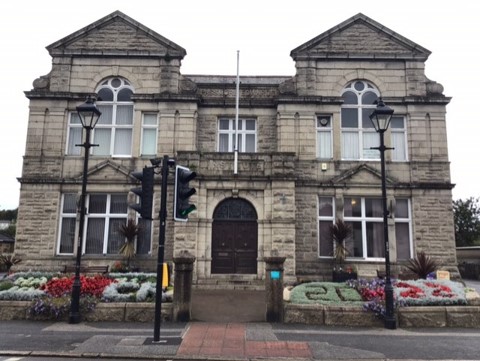Passmore Edwards - the 'Cornish Carnegie'
- Louise@Gwanwyn

- Nov 14, 2022
- 3 min read
Updated: Mar 14, 2024

The name of Passmore Edwards is synonymous with libraries in Cornwall, and for good reason; in a fifteen-year period, he funded no less than 14 libraries and institutes in towns and villages along the peninsula. Yet these buildings are the ‘tip of the iceberg’ of the generosity of a benefactor who was acknowledged to have done more for society than almost all his contemporaries and was referred to as ‘the Cornish Carnigie’ (referencing the American philanthropist Andrew Carnegie).
John Passmore Edwards was born to working-class parents in Blackwater, near Truro, and educated at a small local ‘dame’ school. John’s parents evidently valued knowledge - his father was the only person in their village to subscribe to a newspaper – and they encouraged their sons to read widely. With talent, determination and some fortunate timing, John made significant wealth from editing and publishing newspapers and trade journals in London, to where he moved as a young man.


At a time when not all villages had schools, and only the most affluent in society could afford to own more than a handful of books, John Passmore Edwards’ focus on providing library buildings - and stocking them with generous numbers of tomes – was a direct way to broaden the horizons of the inhabitants of Cornish towns and villages. It was his way of ‘giving back’ to the working classes who were the market for his journals and papers through which he accumulated his wealth. Twice he refused a knighthood – once from Queen Victoria, and again from her son, Edward VII – saying that: ‘I like to do the work for its own sake’.
Between 1890 – when the Blackwater Institute opened – and 1904 (Newton Abbot Public Library), John Passmore Edwards opened 21 separate public buildings in Cornwall; 14 libraries and institutes; two hospitals; two Schools for education in the Arts, Technology and Science; a Meeting Room and an Art Gallery.

These gifts to the population of Cornwall, however, are in fact less than half the story: in this same interval, John Passmore Edwards also made significant contributions to, or the whole cost of, erecting 44 public buildings in London and the southeast, including libraries, children’s homes, convalescent homes, institutes and hospitals. I have plotted their locations on an interactive Google Map:
It is quite a remarkable thought that a single individual funded such a plethora of imposing and useful civic buildings, both in the county of his birth, and to the inhabitants in and around the city where he spent the majority of his adult life. That these buildings are predominately still used for their intended purposes speaks of the far-sightedness of John Passmore Edwards’ vision of what was needed in society; a particularly impressive vision coming, as it did, before the advent of the welfare state which largely evolved in the years after the end of WW1 and accelerated in the years after WW2.
Information on the map and the text here has been taken from two wonderful books about Passmore Edwards, which give much more context to the events surrounding many of the opening ceremonies and the life of John himself. Appropriately enough, copies of both are available through the Cornwall Library Service! John also wrote an autobiography, which I haven’t read – yet – and I also list that here for those who may be interested to find out more about this most generous of Cornwall's benefactors.
References:
The Life and Good Works of John Passmore Edwards – R S Best (pub. 1982 by Truran Press, Redruth)
Funding the Ladder: the Passmore Edwards Legacy – Dean Evans (pub. 2011, by Francis Boutle Publishers)
A Few Footprints – John Passmore Edwards. (pub. 1906).








Comments